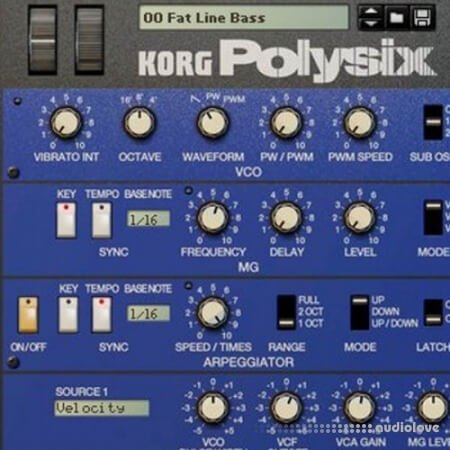
Polysix for Reason uses Korg's proprietary CMT (Component Modeling Technology) to precisely model the electronic circuitry of the original analog instruments, capturing the exact sound and parameter response of the originals.
Polysix for Reason uses Korg's proprietary CMT (Component Modeling Technology) to precisely model the electronic circuitry of the original analog instruments, capturing the exact sound and parameter response of the originals.
In addition to faithfully replicating the sound of the original, the Polysix for Reason also adds enhancements such as 32-voice polyphony (max), up to 16-voice unison (with detune/spread function), flexible external modulation settings, MIDI clock synchronization, and a spread function that adjusts the spaciousness of the effects. This neoteric functionality brings the classic Polysix up to date for use in modern music production.
The Polysix programmable six-voice polyphonic analog synthesizer was introduced in 1981. With a full-sounding voice structure, chorus/ phase/ ensemble effects and performance functions such as arpeggiator, and unison, the Polysix became a world-wide hit. Its distinctive string and pad sounds are often heard to this day.
The interface provides reorganized knobs and switches that resurrect the Polysix in a contemporary "rack-mountable" form for even more intuitive operation and sound-creating versatility.
Specifications
Maximum polyphony:
32 notes (depending on the CPU of host computer)
Unison:
User-definable number of voices (1-16), Detune, Spread
External modulation:
Source (Velocity/ KBD Track/ Aftertouch/ Pitch Bend/ Mod Wheel/ CV1/ CV2), External Modulation 1 (VCO PULSE WIDTH, VCF FREQUENCY, VCA GAIN, MG LEVEL), External Modulation 2 (VCO PULSE WIDTH, VCF FREQUENCY, VCA GAIN, MG LEVEL)
Others:
TEMPO - MG Sync, TEMPO - Arpeggiator Sync
Home page
DOWNLOAD
